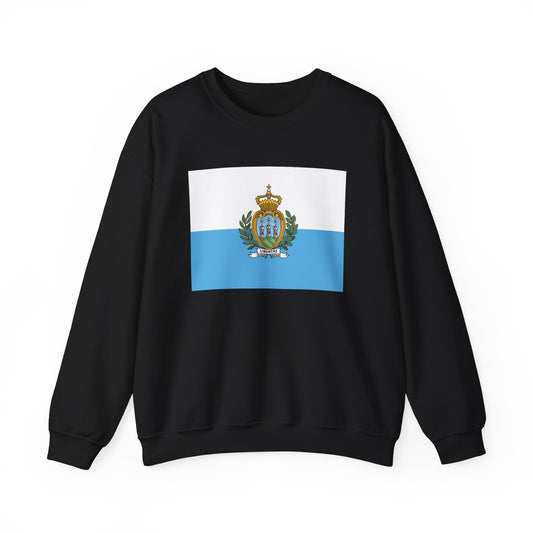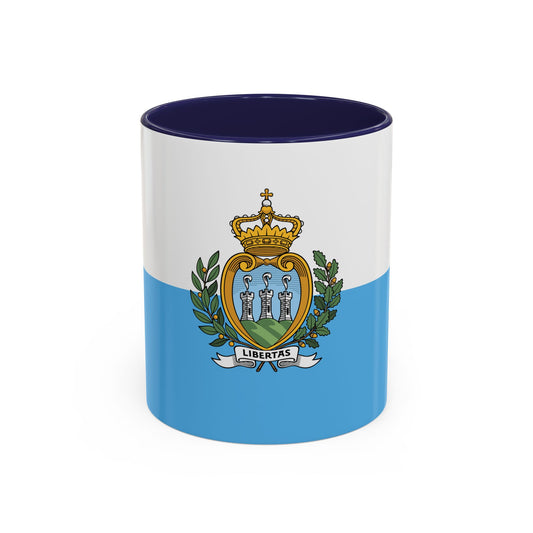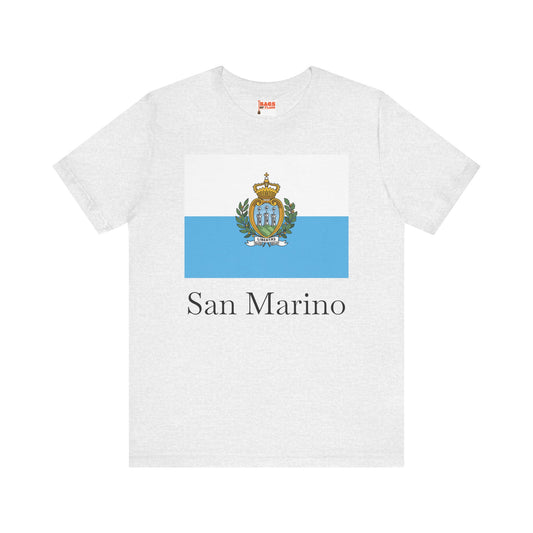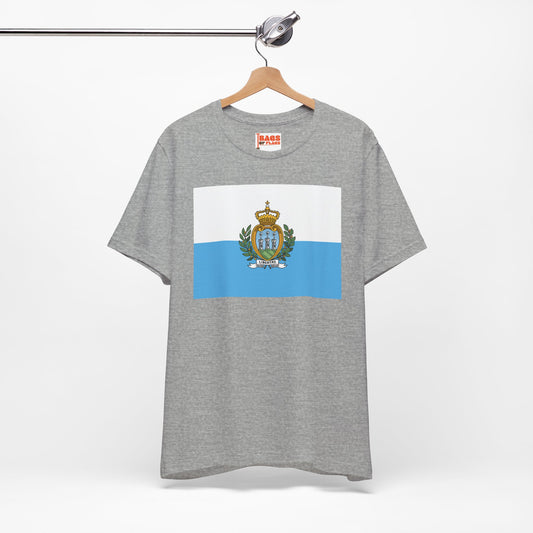-
San Marino Sweatshirt
Regular price $34.15 USDRegular priceUnit price / per -
San Marino Flag Sweatshirt
Regular price $34.15 USDRegular priceUnit price / per -
San Marino Pillow
Regular price $22.65 USDRegular priceUnit price / per -
San Marino Backpack
Regular price $59.79 USDRegular priceUnit price / per -
San Marino Leather Patch Hat
Regular price $18.85 USDRegular priceUnit price / per -
San Marino Mug
Regular price $11.65 USDRegular priceUnit price / per -
San Marino Trucker Cap
Regular price $14.90 USDRegular priceUnit price / per -
San Marino Hoodies
Regular price $34.40 USDRegular priceUnit price / per -
San Marino T-shirts
Regular price $22.79 USDRegular priceUnit price / per -
San Marino Flag Hoodies
Regular price $34.40 USDRegular priceUnit price / per -
San Marino Flag on T-shirt
Regular price $22.79 USDRegular priceUnit price / per
Collection: San Marino
The San Marino flag, also known as the flag of San Marino, is a significant symbol representing the Republic of San Marino. This small European country, surrounded by Italy, has a rich history and culture reflected in its flag. We will delve into the design, historical context, symbolism, current relevance, and additional facts surrounding the San Marino flag.

Overview of the San Marino Flag
The national emblem of San Marino is characterized by two equally sized horizontal bands: the upper one is white, symbolizing peace, while the lower is light blue, denoting freedom. At the heart of the flag lies the state's coat of arms, a distinctive emblem that features a shield adorned with three towering fortresses, each topped with a feathered plume. Surrounding the shield is a regal crowned eagle, a protector of the nation's sovereignty, clutching a scroll inscribed with the word "Libertas" - a direct nod to the nation's foundational principle of liberty.
This central image is framed by a wreath of oak and laurel leaves, representing strength and victory. The intricate details of the coat of arms, set against the simplicity of the flag's bicolor background, encapsulate the essence of San Marino's identity and heritage, blending the republic's cherished values with its historical symbols of independence and resilience.
Historical Context of the San Marino Flag
Adopted in 1862, the San Marino flag is steeped in a historical legacy that mirrors the enduring spirit of this microstate. This adoption period was a time of burgeoning nationalism and identity formation for many states, with San Marino no exception. The choice of colors and incorporation of the state's coat of arms into the flag's design were deliberate decisions meant to convey the republic's core principles and autonomy. Over the decades, the flag has remained relatively unchanged, a testament to the lasting values and stability of San Marino.
This continuity indicates the republic's resilience and commitment to its founding ideals amid evolving political landscapes. The flag's endurance over time reflects not just a resistance to change for its own sake but a more profound, symbolic representation of San Marino's sovereignty and the pride of its people. This historical consistency underscores the importance of tradition and national identity to San Marino, setting it apart as one of the world's oldest republics with a flag that has witnessed the nation's journey through centuries.
Symbolism Embodied in the Flag

The elements depicted on the San Marino flag are laden with rich symbolism that captures the essence of the republic's values and historical narrative. The white and light blue horizontal bands are a canvas for the central coat of arms, a beacon of the nation's enduring ethos. White represents the purity and integrity of San Marino's intentions and dealings, while light blue symbolizes the freedom and liberty foundational to the country since its inception. The heart of the flag, the state's coat of arms, is a powerful emblem of San Marino's resilience and sovereignty.
The three towers, each adorned with a plume, stand as silent witnesses to the republic's historical struggles and triumphs, embodying the strength and independence characteristic of San Marino throughout its long existence. These fortresses—Guaita, Cesta, and Montale—are not only architectural marvels but also symbols of the unyielding spirit of the Sammarinese people. The crowned eagle clutching a scroll with "Libertas" boldly proclaims the republic's commitment to freedom, a revered principle that is literally written into the nation's identity. This assembly of symbols weaves together a narrative of unity, strength, and a steadfast commitment to liberty, painting a vivid portrait of San Marino's past, present, and aspirations for the future.
Current Relevance of the San Marino Flag
Today, the San Marino flag continues to hold a place of pride at the heart of national life, prominently featured in various settings, from government buildings to international sports competitions. It unifies the citizens under a banner of shared history and ideals, especially during significant events such as the Festa della Repubblica, where the flag's presence underscores the collective identity and independence of the Sammarinese people. Despite its revered status, the flag has sparked discussions, particularly concerning its ability to represent the evolving fabric of San Marino society.
Debates focus on whether the traditional symbols and colors reflect the nation's populace's contemporary values and diverse makeup. These conversations underscore a dynamic relationship between the country and its flag, where respect for historical heritage intersects with ongoing national identity and inclusivity dialogue. This engagement with the flag highlights its enduring relevance and showcases a community actively negotiating its cultural and symbolic landscapes in the modern era.
Additional Facts and Protocols
San Marino exhibits a unique blend of reverence and flexibility in ceremonial traditions and flag etiquette. The national flag is subject to specific protocols that reflect the country's respect for its emblem. Notably, a particular practice exists regarding the flag's display; it is to be hoisted at the crack of dawn and solemnly lowered as the sun sets, encapsulating a day-long tribute to the nation's heritage and values. This daily ritual underscores the importance of the flag as a symbol of national pride and unity.
Another protocol point dictates that the flag must never come into contact with the ground, ensuring that it remains a respected and untarnished symbol of the country. Such guidelines underscore the deep-seated honor and dignity afforded to the flag, indicative of the broader cultural significance of national symbols in San Marino.
An exciting facet of the San Marino flag protocol is the absence of a standardized aspect ratio, a rarity among national flags. This allows for a degree of variation in the flag’s dimensions, which is not commonly permitted for national symbols. This somewhat flexible approach to the flag's proportions contrasts the strict protocols regarding its display and handling, illustrating San Marino's unique balance between tradition and adaptability in its national symbols.






















